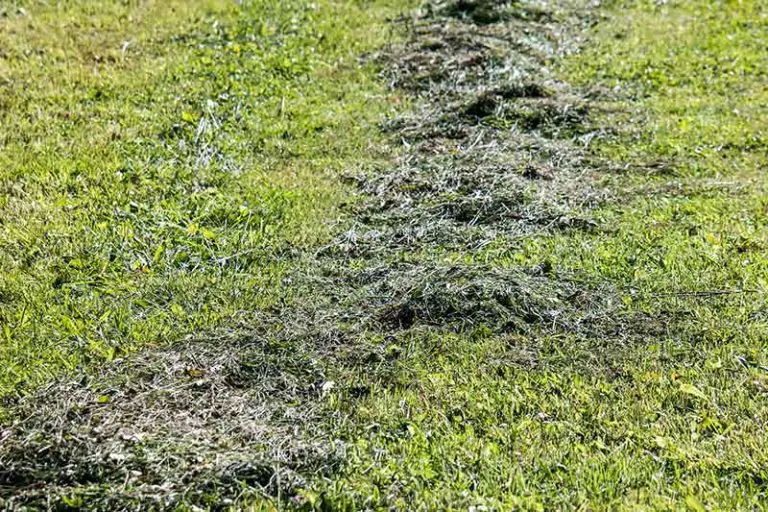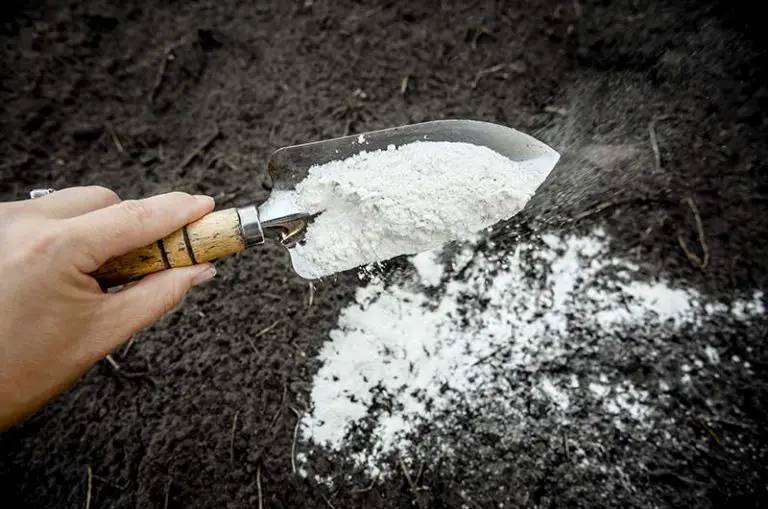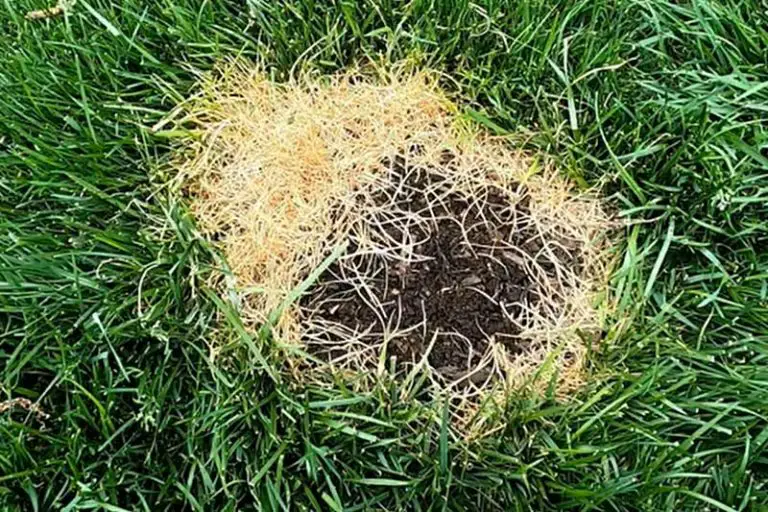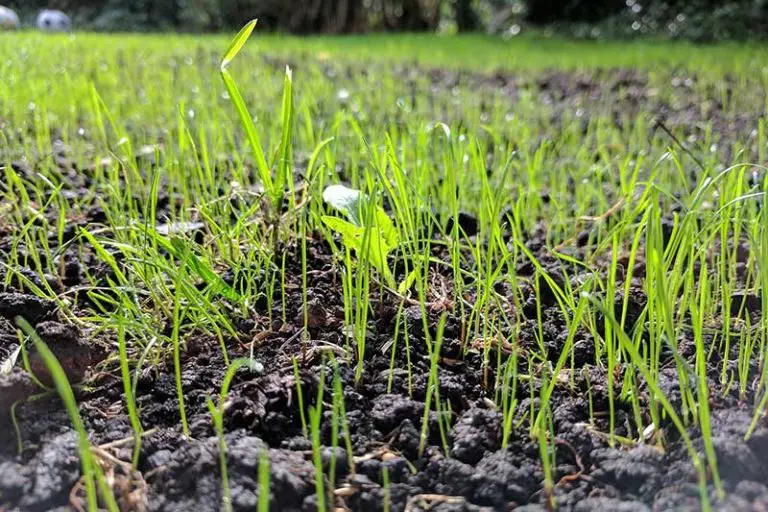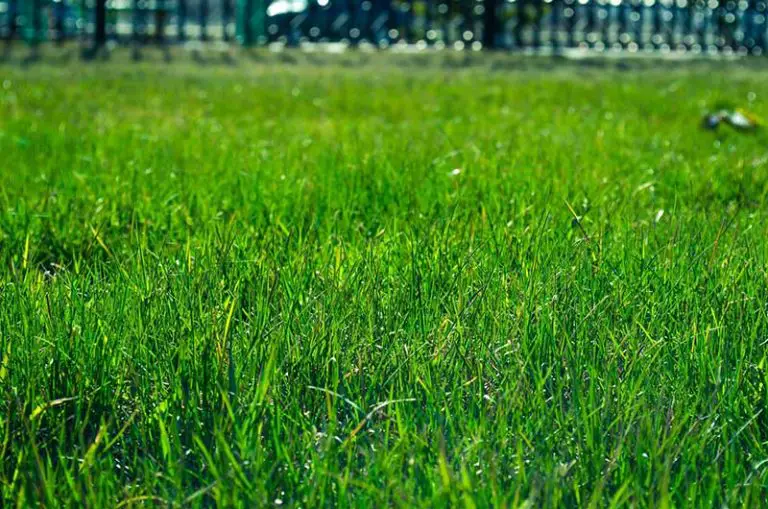Find the Perfect Fertilizer Ratio for Your Lawn
Shopping for lawn fertilizers can be a bewildering process – there are endless formulations of fertilizers, all designed to deliver differing quantities of nutrients in different formats. These formulations are represented as a ratio on the packaging of each product. It’s crucial to pick the right lawn fertilizer ratio for your lawn to ensure you’re delivering the nutrients that your grass needs the most.
Generally speaking, the best lawn fertilizer ratio for established lawns is either 3:1:3 or 4:1:2. This ratio provides mature grass with the ideal balance of nutrients it requires at this stage of growth. However, nutritional requirements can vary greatly from lawn to lawn; to determine the best lawn fertilizer ratio for your lawn’s individual needs, it’s best practice to test the soil first.
Understanding Your Lawn’s Nutritional Requirements
As is the case with all plants, the grass on your lawn requires a range of nutrients in order to thrive. These include micronutrients such as calcium and magnesium, which are needed in relatively small amounts. The three nutrients that grass needs in the highest amounts are nitrogen (N), phosphorus (P), and potassium (K), these being known as ‘primary nutrients’.
We explain how your grass plants use each of these nutrients in more detail below.
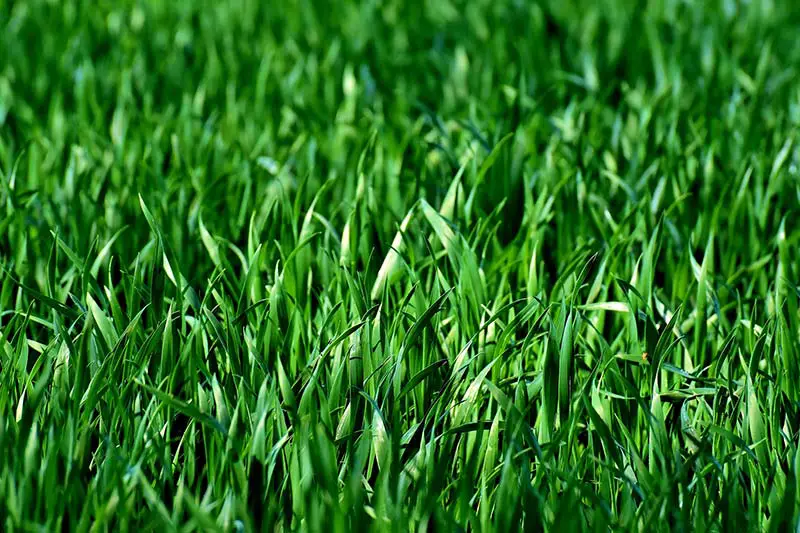
Why Does Grass Need Nitrogen?
Nitrogen (N) is often considered to be the most important nutrient that your grass needs to stay healthy. In addition to giving the grass its green color, this nutrient helps your lawn to grow lush and thick foliage.
Nitrogen is essential for the grass’ production of chlorophyll and its upward growth above the soil level. In turn, this aids the grass plant’s process of photosynthesis, i.e. the way in which the grass feeds itself. Better photosynthesis provides your grass plants with more energy to grow stronger foliage and root systems. The result is a thick, green lawn that’s resistant to stressful conditions like drought, pests, or fungal disease.
The most common signs of a nitrogen deficiency in your lawn are:
- Discoloration, grass may appear pale yellow-green or orange-brown
- Having a lawn full of weeds
- Grass growing more slowly than usual
- Lawn looks patchy or thin
- Generating less grass clippings than usual after mowing
Why Does Grass Need Phosphorus?
Phosphorus (P) is another crucial nutrient that your grass needs. This nutrient is involved in a range of physiological processes to do with the grass’ structure and growth; in summary, phosphorus is responsible for any kind of cell production in the grass.
Phosphorus helps grass plants to grow extensive root systems and strong blades. For this reason, this nutrient is particularly important for early development in new grass. It’s also involved in photosynthesis, respiration, and the production of sugar phosphates.
The most common signs of a phosphorus deficiency in your lawn are:
- Stunted grass growth
- Discoloration, grass may appear red, purple, or unusually dark green
- Grass having weak or shallow root systems
Why Does Grass Need Potassium?
Potassium (K) is the third nutrient that grass needs to thrive. This nutrient is responsible for the regulation of the grass’ physiological processes. It also enables the grass to use its nitrogen more effectively.
The physiological processes in which potassium plays a key role include the grass’ ability to uptake water and nutrients, in addition to the production of new proteins and starches. Potassium helps the grass to build thick cell walls; this helps to strengthen the grass plants, making your lawn more resistant to external stress.
The most common signs of a potassium deficiency in your lawn are:
- Chlorosis, which causes the grass blades to turn yellow from their tips down
- Defoliation and shedding of grass
- Stunted development of roots and grass blades
- Slow growth of grass
Lawn Fertilizer Ratios Explained
Now that you understand the nutritional requirements of your grass, we can apply this knowledge to better understand lawn fertilizer ratios. All fertilizers come with a ratio or ‘NPK value’; this value represents the amount of nitrogen (N), phosphorus (P), and potassium (K) that the fertilizer contains.
For example, an equally balanced fertilizer would have an NPK value of 10-10-10. This means that the fertilizer contains 10% nitrogen, 10% phosphorus, and 10% potassium, with the rest of the fertilizer being filler material.
Lawn fertilizer ratios differ product-to-product to suit the unique nutritional requirements of every lawn. At each stage of their growth, your grass plants require different amounts of each nutrient to thrive; e.g., a starter fertilizer for new grass will have an unsuitable balance of nutrients for the grass on an already-established lawn.
Also, your lawn may suffer from a deficiency in one particular nutrient. With a range of NPK values, you can choose a fertilizer to replace certain nutrients without overfertilizing the grass with nutrients that it already has enough of.
What is the Best Lawn Fertilizer Ratio?
For general lawn fertilization, the best lawn fertilizer ratio is either 3:1:3 or 4:1:2. Fertilizers with this NPK value contain a higher amount of nitrogen and potassium, along with a small amount of phosphorus. Such a balance is ideal for the general fertilization requirements of a mature lawn.
Best Spring Lawn Fertilizer Ratio
The best spring lawn fertilizer ratio is an NPK value of 15-0-6, 20-0-5, 30-0-3, or 35-0-5. All of these ratios contain a high amount of nitrogen, a moderate amount of potassium, and no phosphorus at all.
Both warm-season and cool-season grasses should be fertilized in the spring. At this time of year, providing the grass with a high amount of nitrogen helps to encourage it to grow thick, strong foliage and strong root systems. This will improve your grass’ resilience in preparation for summer when the lawn is vulnerable to drought.
Best Summer Lawn Fertilizer Ratio
The best summer lawn fertilizer ratio is an NPK value of 6-0-0, 10-0-4, or 15-0-8. These ratios contain less nitrogen than your spring fertilizer, a very small amount of potassium, and no phosphorus.
If you have cool-season grass, it’s best to avoid fertilizing over summer if possible. Adding nitrogen to cool-season grasses in summer causes excessive foliar growth; this leaves the grass more susceptible to the development of disease.
However, you should fertilize warm-season grasses in the summer, particularly if you have planted new grass. You should ideally opt for a slow-release fertilizer to encourage the steady growth of your grass and to avoid fertilizer burn.
Best Fall Lawn Fertilizer Ratio
The best fall lawn fertilizer ratio is 6-0-0. This ratio only contains a very small amount of nitrogen and no phosphorus or potassium at all.
If you have warm-season grass, you should avoid fertilizing in the fall as your grass will turn dormant at this time of year. Also, fertilizing late in the fall isn’t recommended for either grass type as all growth stops when temperatures drop low enough.
With that said, early fall fertilization is recommended for cool-season grass types. Adding a fertilizer at this time will help to support your grass over winter, making it more resistant to weeds and helping it to recover quickly in the following spring. It’s important to use a fertilizer with a low nitrogen content to prevent excessive grass growth before winter; your plants will struggle to survive the cold if they are overgrown.
Note: Although we have provided some of the best lawn fertilizer ratios, these lawn fertilizer ratios are not a one-size-fits-all situation. Every lawn is different and has its own nutritional requirements depending on a range of factors. In order to determine which exact lawn fertilizer ratio will suit your lawn best, you’ll have to find out the current state of its nutrient content. The easiest way to about this is to test your soil.
How Do I Know Which Fertilizer is Best for My Lawn?
In order to find out the exact best lawn fertilizer ratio for your lawn, you’ll have to find out the current state of its nutrient content and pH level. The easiest way to find out this information is to test your soil using an at-home kit, or have a professional lab test it for you.
1. Testing Your Soil Yourself
Your first option is to test your soil yourself using an at-home test kit. These kits are very easy to use and provide basic information about the pH level of your soil and the nutrients it currently contains.
2. Sending a Soil Sample for Professional Testing
The alternative option is to send a sample of your soil to a testing laboratory for professional testing. This will provide you with a much more detailed analysis of your soil’s pH and nutrient content. Professional soil testing is a service that your local extension office likely provides, either for free or for a small fee. They will also be able to advise you on the nutrients your lawn currently lacks and what fertilizer you should use to get it into optimal condition.

